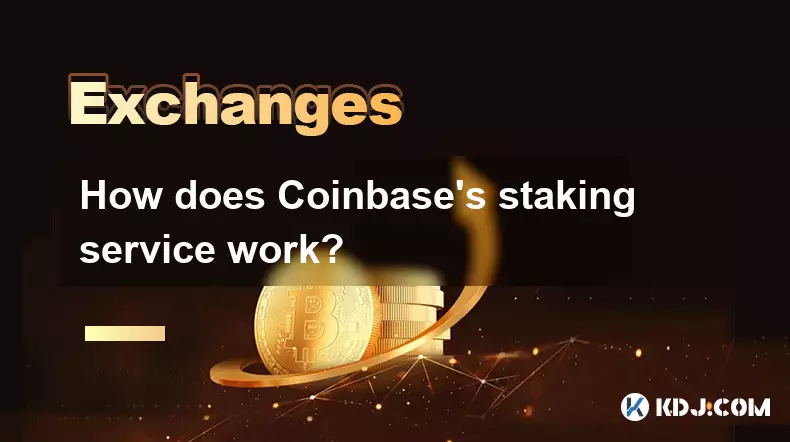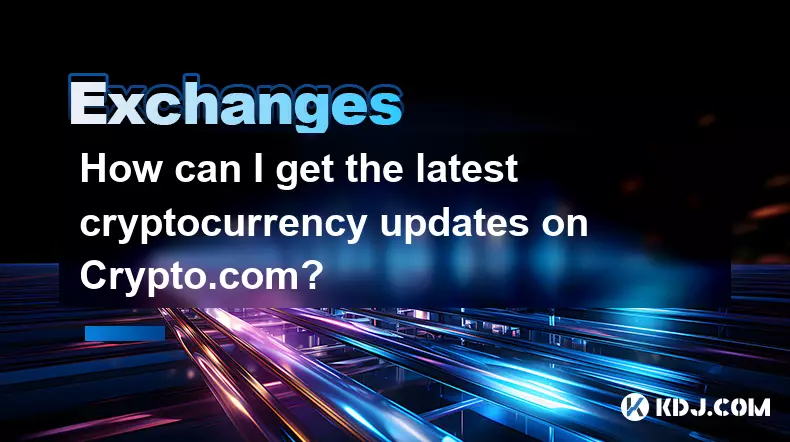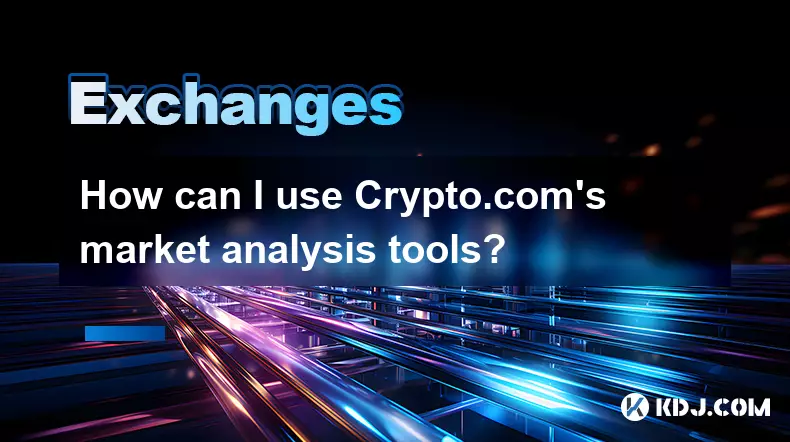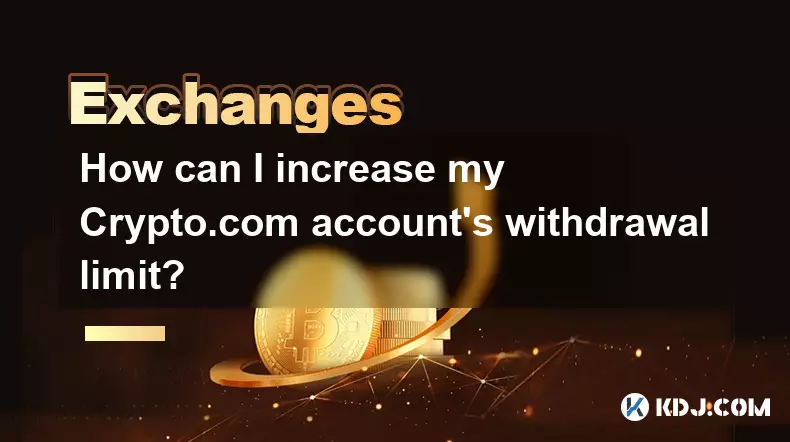-
 bitcoin
bitcoin $109667.069529 USD
-3.03% -
 ethereum
ethereum $3936.685804 USD
-4.07% -
 tether
tether $1.000493 USD
0.01% -
 xrp
xrp $2.771823 USD
-4.74% -
 bnb
bnb $957.805027 USD
-5.34% -
 solana
solana $196.735100 USD
-6.68% -
 usd-coin
usd-coin $0.999727 USD
-0.01% -
 dogecoin
dogecoin $0.227355 USD
-5.12% -
 tron
tron $0.335205 USD
-0.81% -
 cardano
cardano $0.779256 USD
-3.59% -
 ethena-usde
ethena-usde $0.999900 USD
-0.06% -
 hyperliquid
hyperliquid $42.492095 USD
-6.61% -
 chainlink
chainlink $20.501853 USD
-4.34% -
 avalanche
avalanche $28.952606 USD
-11.21% -
 stellar
stellar $0.356038 USD
-3.93%
How does Coinbase's staking service work?
Coinbase simplifies staking by auto-enrolling eligible users, pooling funds, and handling node operations, allowing holders of supported PoS coins to earn rewards securely and easily.
Sep 23, 2025 at 07:19 pm

Understanding Coinbase Staking Mechanics
1. Users who hold supported cryptocurrencies on Coinbase can participate in staking directly through their accounts. The platform automatically enrolls eligible assets when staking is available, eliminating the need for technical setup. This streamlined process allows individuals to earn rewards without managing validator nodes or complex software.
2. When users stake through Coinbase, their funds are pooled with those of other participants. Coinbase acts as the node operator, handling validation responsibilities on the blockchain network. This delegation model ensures consistent uptime and compliance with protocol rules, which are essential for earning staking rewards.
3. Rewards are distributed based on the amount of cryptocurrency each user has staked and the duration of their participation. These incentives come from network-issued block rewards and transaction fees. Payouts occur at regular intervals and are credited directly to user accounts in the same asset being staked.
4. Not all coins on Coinbase support staking. Only select proof-of-stake (PoS) tokens such as Ethereum (ETH), Cardano (ADA), Solana (SOL), and Polygon (MATIC) are eligible. Each asset has specific requirements regarding minimum balances, lock-up periods, and eligibility criteria determined by the underlying blockchain protocol.
5. During active staking, funds remain under the user's control but may be subject to withdrawal delays. Some networks enforce unbonding periods where assets cannot be moved immediately after unstaking. Coinbase provides clear timelines for these restrictions within the app interface.
Security and Compliance Measures
1. Coinbase implements enterprise-grade security protocols to protect staked assets. Multi-signature wallets, cold storage solutions, and continuous monitoring systems safeguard against unauthorized access and cyber threats. These measures apply equally to both custodial and staked holdings.
2. Regulatory compliance is integrated into the staking framework. Coinbase ensures that its staking programs adhere to financial regulations across jurisdictions where it operates. This includes reporting obligations and adherence to anti-money laundering (AML) standards.
3. Regular audits by third-party firms verify the integrity of staking operations. These assessments confirm that reward distributions align with network data and that user balances are accurately reflected. Transparency reports are occasionally published to reinforce trust.
4. In the event of slashing—a penalty imposed by a blockchain for misbehavior—Coinbase absorbs the loss on behalf of users. This protection shields retail investors from risks associated with node downtime or consensus violations committed by the operator.
5. Two-factor authentication (2FA) and biometric login options add layers of personal account security. Users are encouraged to enable these features to prevent unauthorized transactions involving staked positions.
User Experience and Accessibility
1. The staking interface within Coinbase’s mobile and web applications is designed for simplicity. Users can view available staking options, projected annual yields, and estimated earnings with minimal navigation. Real-time updates reflect changes in staked balances and upcoming payouts.
2. Educational resources accompany each staking product. These include explanatory videos, FAQ sections, and risk disclosures that clarify how PoS networks function and what factors influence returns. This information helps users make informed decisions before committing funds.
3. Automatic compounding is enabled by default for certain assets. Instead of withdrawing rewards, they are reinvested into the staking pool, increasing the total balance eligible for future earnings. Users can opt out if they prefer periodic withdrawals.
4. Notifications alert users about key events such as reward disbursements, changes in staking status, or maintenance affecting validator performance. These alerts help maintain awareness without requiring constant manual monitoring.
5. Customer support channels provide assistance for staking-related inquiries. Live chat, email support, and community forums allow users to resolve issues ranging from delayed rewards to account verification problems.
Frequently Asked Questions
What happens to my staked assets during a network upgrade?Network upgrades are managed by Coinbase without requiring user intervention. If a hard fork occurs, Coinbase evaluates whether to support the new chain based on legal and technical considerations. Users retain ownership of their original staked assets unless a compatible fork is adopted.
Can I lose money by staking on Coinbase?While staking generates rewards, the value of the underlying cryptocurrency can decrease. Market volatility may offset gains from staking income. Additionally, some networks impose penalties for downtime, though Coinbase covers these costs to protect users from direct losses.
Are staking rewards taxable?Tax treatment varies by country. In many jurisdictions, staking rewards are considered taxable income at the time they are received. Users should consult local tax authorities or financial advisors to understand reporting requirements related to crypto earnings.
How does Coinbase choose which cryptocurrencies to offer for staking?Selection depends on multiple factors including regulatory clarity, network stability, demand from users, and technical feasibility. Assets must meet internal risk assessments before being added to the staking lineup, ensuring alignment with security and compliance standards.
Disclaimer:info@kdj.com
The information provided is not trading advice. kdj.com does not assume any responsibility for any investments made based on the information provided in this article. Cryptocurrencies are highly volatile and it is highly recommended that you invest with caution after thorough research!
If you believe that the content used on this website infringes your copyright, please contact us immediately (info@kdj.com) and we will delete it promptly.
- XRP Price: October Rally on the Horizon After September Consolidation?
- 2025-09-26 16:25:13
- Bitcoin Price Wobbles: Investors Buy the Dip as Powell's Words Stir Uncertainty
- 2025-09-26 16:25:13
- Kaspa Price, Smart Contracts, and the 2026 Forecast: A New York Minute
- 2025-09-26 16:30:01
- Bitwise, Hyperliquid ETF, and HYPE Token: What's the Deal?
- 2025-09-26 16:45:14
- B HODL, Bitcoin, and Treasury Purchases: The New Institutional Playbook
- 2025-09-26 17:05:15
- Cloudflare, Stablecoins, and AI Agents: A New Era of Automated Finance
- 2025-09-26 16:45:14
Related knowledge

How can I get the latest cryptocurrency updates on Crypto.com?
Sep 26,2025 at 07:54am
Accessing Real-Time Crypto Market Data on Crypto.com1. Navigate to the Crypto.com website or open the mobile application to access live price charts a...

How can I use Crypto.com's market analysis tools?
Sep 23,2025 at 01:54am
Understanding Crypto.com’s Market Analysis Dashboard1. Accessing the market analysis tools begins with logging into your Crypto.com account through th...

How can I unlink my Crypto.com payment method?
Sep 23,2025 at 12:54am
Understanding Payment Methods on Crypto.com1. Crypto.com allows users to link various payment methods including credit cards, debit cards, and bank ac...

How can I increase my Crypto.com account's withdrawal limit?
Sep 23,2025 at 10:37am
Understanding Withdrawal Limits on Crypto.com1. Crypto.com enforces withdrawal limits to enhance account security and comply with regulatory standards...

How can I check Crypto.com's cryptocurrency exchange rates?
Sep 26,2025 at 01:54am
Accessing Real-Time Crypto.com Exchange Rates1. Navigate to the official Crypto.com website or open the mobile application. Both platforms display liv...

How can I participate in liquidity mining on Crypto.com?
Sep 23,2025 at 09:36am
Understanding Liquidity Mining on Crypto.com1. Liquidity mining allows users to earn rewards by providing assets to decentralized finance (DeFi) pools...

How can I get the latest cryptocurrency updates on Crypto.com?
Sep 26,2025 at 07:54am
Accessing Real-Time Crypto Market Data on Crypto.com1. Navigate to the Crypto.com website or open the mobile application to access live price charts a...

How can I use Crypto.com's market analysis tools?
Sep 23,2025 at 01:54am
Understanding Crypto.com’s Market Analysis Dashboard1. Accessing the market analysis tools begins with logging into your Crypto.com account through th...

How can I unlink my Crypto.com payment method?
Sep 23,2025 at 12:54am
Understanding Payment Methods on Crypto.com1. Crypto.com allows users to link various payment methods including credit cards, debit cards, and bank ac...

How can I increase my Crypto.com account's withdrawal limit?
Sep 23,2025 at 10:37am
Understanding Withdrawal Limits on Crypto.com1. Crypto.com enforces withdrawal limits to enhance account security and comply with regulatory standards...

How can I check Crypto.com's cryptocurrency exchange rates?
Sep 26,2025 at 01:54am
Accessing Real-Time Crypto.com Exchange Rates1. Navigate to the official Crypto.com website or open the mobile application. Both platforms display liv...

How can I participate in liquidity mining on Crypto.com?
Sep 23,2025 at 09:36am
Understanding Liquidity Mining on Crypto.com1. Liquidity mining allows users to earn rewards by providing assets to decentralized finance (DeFi) pools...
See all articles










































































